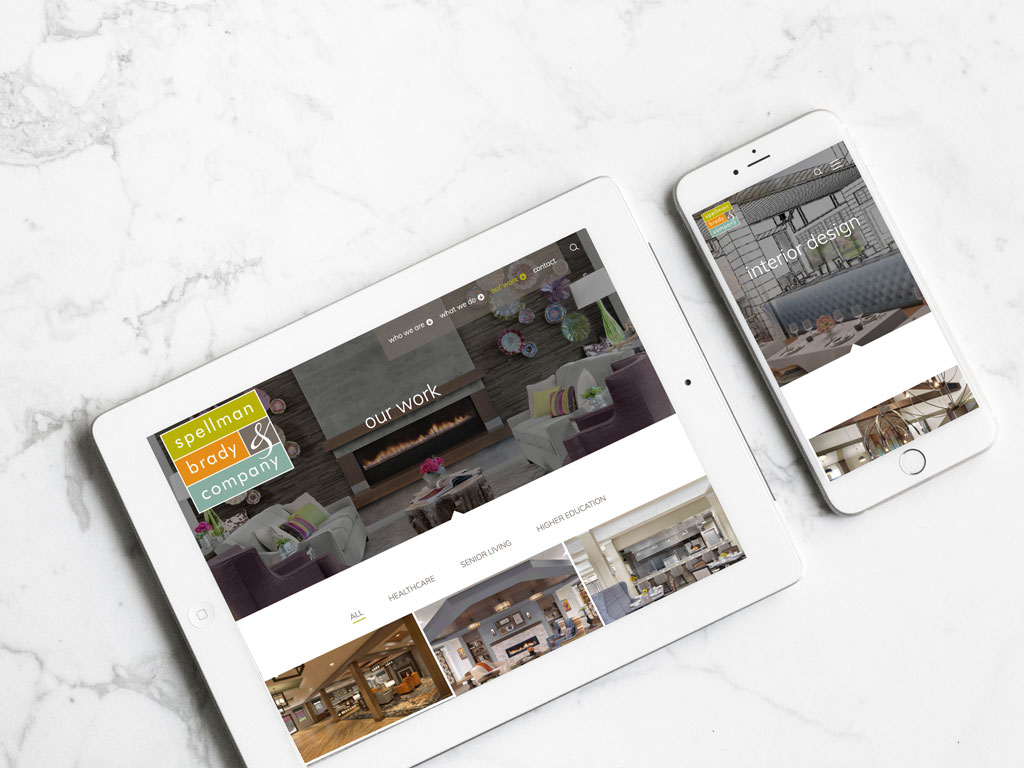Mobile Responsive.

Anything Web Can Do, Web Can Do Mobile
Mobile responsive web design is the art of adapting a single website design to fit a range of use cases based on the user’s device type and screen resolution. Responsive designs might look and feel somewhat different on each device, but maintain consistent branding and customer experience across the board. If it sounds complicated, well, you’re right. It is. Fortunately for you, we’ve mastered it.
Examples of Mobile Responsive Design by Blayzer in St. Louis, MO
Check out these examples of mobile responsive web designs created by Blayzer Digital in St. Louis, Missouri. We’ve done business sites, content sites, ecommerce stores, custom apps, online forms, and more. There’s nothing we can’t make mobile-friendly.
Web Solutions Should Look Good & Work Great on All Devices
The average digital consumer today now owns more than 3 internet-enabled devices. Most people have a laptop or desktop computer and a smartphone. Many also have a tablet, gaming console, smart TV, or smart auto system. A growing number of people are also adding wearables like smart watches to their personal technology stack.
People don’t just collect all these devices for fun, they use them all in different ways. For example, someone might learn about a product from an email they opened on their phone, research it more thoroughly on their laptop during lunch, and then make a purchase on their tablet after discussing it with their spouse over dinner. Phone for on-the-go communication, navigation and quick search, computer for deeper exploration, and tablet for casual browsing, shopping, and video.
Responsive web design allows you to create a single solution that meets the needs of all your users regardless of the devices they use. Responsive solutions adjust themselves automatically for a seamless cross-device user experience.
See Mobile Responsive Design in Action
There’s an easy way to see responsive design at work: simply open up a website on multiple devices and compare the differences. There is also a fun way.
To watch the magic of mobile responsive design in action right before your eyes, open this website on a desktop or laptop at full screen width, then click and drag to slowly shrink your browser window down to a narrower width. Watch how the design responds as you alter the window size. Images change or disappear. Menus condense. Columns shift and stack together. Links transform into buttons that are easy for even the clumsiest, stubbiest fingers to tap. And best of all, users can still accomplish all their goals on the site regardless of the window size or layout.
Responsive Web Development
The term “mobile responsive design” and its many variations (mobile-friendly design, responsive design, responsive web design, RWD, etc.) are all a bit of a misnomer. While it does rely on a designer’s layout and UI/UX skills, much of the work that goes into responsive design is actually front-end programming. Responsive designs are brought to life by developers using fluid, proportion-based grids, flexible images, smart scripts, and CSS media queries. It also surprisingly involves a lot of math, so be sure to study up, future web designers!
Common Responsive Web Design Breakpoints
Blayzer approaches responsive web design by identifying “breakpoints” for the screen resolutions of popular devices. Designs shift fluidly as you resize the display window, until you reach one of these common breakpoints. When a breakpoint is reached, the layout will “snap” to an optimal design layout for that screen size and resolution.
New Blayzer web projects currently support and are QA tested for the following mobile responsive breakpoints:
Desktop:
- 2550 x 1080
- 1600 x 900
- 1440 x 900
Standard Tablet:
- 1024 x 768
- 768 x 1024
Standard Phone:
- 375 x 667
- 667 x 375
Large Phone:
- 420 x 736
- 736 x 420
Small Phone:
- 320 x 568
- 568 x 320
Benefits of Mobile Responsive Web Design

Back when mobile technology first arrived, companies spent thousands of dollars building separate-but-equal solutions for their mobile users. Many spent even more on native mobile applications that simply replicated their website experience in the mobile environment. As you can imagine (or in our case, recall), this was complicated, redundant, and expensive to not only create but maintain. Now we have mobile responsive design to simplify things.
Mobile responsive design improves your web solution in three very important ways:
- User Experience (UX) – Your content and solutions will always be presented in the best format for the active device’s current screen size and resolution.
- User Retention – Users on mobile devices will be less likely to leave your site when they are able to easily navigate and find relevant information in a custom mobile design.
- Search Engine Optimization (SEO) – Google search indexing has gone mobile-first. If your site isn’t mobile-friendly it could rank poorly or be excluded from mobile search results.
Mobile Responsive vs. Mobile Optimized
True mobile-friendly web development isn’t just about making a site fit any screen, but actually optimizing the responsive layouts to fit the needs of each user. For example, tablets are extremely popular for online shopping, while cell phones are particularly popular when it comes to local search and discovery. A well-optimized mobile-friendly strategy would be to make Shop links prominent on tablet layouts and Call or Directions links more prominent for mobile users. Not sure what devices your visitors use and how? We can help you figure that out.






